Last year, I went back to Varanasi, or Benaras as the locals call it (or Kashi as the Hindu scriptures call it), some thirty years after I last visited it. The idea was to reignite my connection with this ancient city, rediscover my ties to the city that Mark Twain described as being “older than history.”
People in India are surprised when I say that I have roots in Benaras – I am a Bengali, my roots should be in Bengal, not in a city in the middle of the Hindi heartland! But Bengalis, like a lot of other people in my vast mothership of a country and the rest of the world, have been moving across boundaries for years for various reasons. They say that Benaras has the largest population of Bengalis outside Bengal, with perhaps the first significant contingent moving to the city in the 18th century and settling around the temples built by Rani Bhabani of Natore.[note] Rani Bhabani was the head of a large aristocratic family in the late 18th century and was known to have built several temples as far as in Benaras which was more than 750 kms away. The Zamindars of Natore were very influential [/note]
My connection to Benaras began in the late 1830s when a young woman called Ram Dashi decided to leave her cholera-ridden village in West Bengal with her son and her nephew. Cholera outbreaks were endemic in Bengal in the 19th century and her village (I think it was called Daria) hadn’t escaped its deathly clutches. Ram Dashi had lost her husband and most of her family, so there was only one thing to do now – to go to Benaras, the holy city where most Bengali Hindu widows went to live out the rest of their tragic lives.
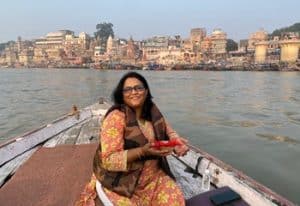
Ram Dashi took a boat up the river Hooghly with the two young boys, making her way upstream through the Ganga river system to get to Benaras. She stopped off at Gorakhpur as she had run out of money by then. She was a Brahmin and a good cook, so she managed to find herself a cooking job in a Bengali Brahmin household in return for shelter, food and some money. As it happened, this family had many daughters but no sons, so they asked Ram Dashi if she would let them have her nephew. They promised to take good care of him, educate him and eventually marry him off to one of their daughters. Ram Dashi agreed as the future sounded brighter for her orphaned nephew with this family than with her and she left him behind when she resumed her journey to Benaras. The family did keep their word because the nephew’s progeny went on to become quite well-known judges, lawyers, civil servants and doctors.
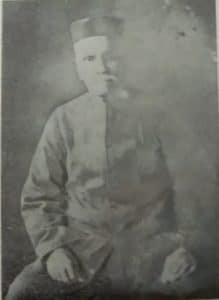
Ram Dashi finally reached Benaras by boat, but they wouldn’t let her live in any of the widow ashrams as she had her 10-year-old son, Ram Kali, with her. So, she found a cook’s position in another wealthy Bengali household. The two of them had a roof over their heads and food in their bellies, but Ram Kali wasn’t ready to accept this fate. So, like a lot of other poor Bengali boys in the 19th century, he borrowed schoolbooks from their employer’s children and studied at night under the streetlights outside. One evening, he was noticed by a teacher, who was impressed by the young boy’s thirst for knowledge and wanting to better his lot. He took him under his wing and enrolled him on a scholarship in the Jaynarayan Pathshala, a school set up in late 18th century by Maharaja Jay Narayan Ghoshal of Bhukailash.[note] Another prominent Landowning family of Khidirpur, a suburb of Kolkata[/note] The rest, as the cliché goes, is history. Ram Kali Chaudhuri went on to study Law and joined the judiciary. He retired from the Allahabad High Court as a sub-judge in 1884. He then joined the movement for independence, joining Indian National Congress when it formed in 1885 in Bombay. He became a member of the United Province Legislative Council in 1891 until his death.
Ram Kali Chaudhuri died in 1900, but he left behind a good legacy. His older two sons followed his footsteps, studied Law and were active members of the Indian National Congress and the Indian independence movement. I’m told that the Benaras contingent of the Dandi (Salt) March in 1930 set off from the Chaudhari house. His youngest son, Captain Dr Sharat Kumar Chaudhari, became a doctor, serving in World War I. He was the personal physician to the Kashi Naresh (the King of Benaras) and also the president of Indian Medical Association (1948-49).
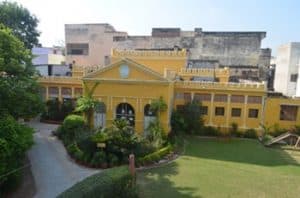
Captain Chaudhuri, as he was lovingly referred to by his family and friends, was also father to my paternal grandmother, Lilavati. Even though Lila was born in 1905 to a Hindu Brahmin family, her progressive parents sent her to school to get an education and her first teacher was none other than the social reformer Annie Besant, who had just set up an English-medium school in the newly established Theosophical Society![note] Annie Besant, a Theosophist, and an educationist. She was the President of the Theosophical Society. An ardent advocate of self-rule, she became the first President of Indian National Congress in 1917 [/note] Lila loved her Annie Didimoni and couldn’t wait to get up every morning and dash across the road from her house to her school and help Ms Besant dust the desks and get the classroom ready for the day.
Lila had a magical childhood, filled with books and learning. Unlike her contemporaries, she married relatively late. Her husband, Priyanath Bhattacharya, was a schoolteacher and supportive of her passion for reading. Lila gave her school-leaving exams when she was pregnant with my father, Dilip. Later, Dilip would stand first in the state for the same school-leaving exams and Lila would joke about him having an unfair advantage since he had gone through the exams once before while in her tummy!! Priyanath also had a Benaras connection – his older brother, Raghunath Bhattacharya was a much-loved headmaster of the Bengali Tola Intermediate College for over 20 years. The Bengali Tola was set up in 1850s to educate students in both English and Bengali. This Benaras institution grew substantially under Raghunath’s tenure and had many illustrious alumni. Raghunath was a strict but fair person and there are many stories about him going out of his way to help poor students – they say that he knew every student in every school year! But that is another story.
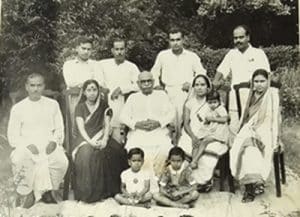
My paternal grandfather, Priyanath, retired from his government education career and became the headmaster of Bengali Tola for a short period after his brother in the late 1950s. Lila and he built a house called ‘Shivayan’ on the grounds of the old British Benaras Club – it was within a 10-minute walking distance of the Chaudhuri house, where Lila had grown up and where her father, uncles and cousins still lived. My grandfather died in 1977 and when my father retired from the Indian civil service in the mid-1980s, my parents went to live in Benaras with my grandmother. They all lived there together until my parents decided to move to Lucknow with my grandmother in the mid-1990s. ‘Shivayan’ was sold off and I never went back to the city as life got in the way and there seemed to be no compelling reason to go back.
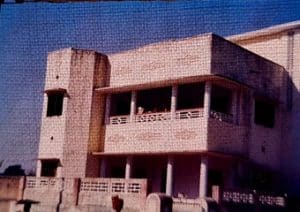

Now, 30 odd years on, Benaras seemed to be calling me and so I went back. Shivayan and the Chaudhuri house are long gone, the city has changed so drastically that I couldn’t really recognise the place. But I could still feel the strong connection and a sense of pride as I met my cousins three times and we talked about our ancestors. But the clincher was when I went to where Shivayan used to be (now replaced with a jewellery store) and right next to it was a paan-shop, which our city guide propounded was the best in Benaras. We went to the shop to buy some paan. Our guide also said that the shop was quite old, to which I said that there used to be a paan-shop opposite the house even when we lived there. So, our guide mentioned to the shop owner that I used to live in the house opposite and the old man said that the house was called Shivayan and that it belonged to Priyanath Bhattacharya and then later to his son, Dilip, who was one of the nicest and humblest people the old man had ever met despite being a high-ranking civil servant (‘bare varisht adhikari’) – so who was I to them? It was that moment that I was truly proud to be my father’s daughter and to be a 6th generation ‘probashi Bangali’ from Benaras.
‘Probashi Bangali’ refers to people who have moved away to settle down in places far away from their original home in Bengal.
Mohua Bhattacharya, following ineptly in her father’s footsteps, works for the UK Civil Service and lives in Cambridge with her family.
